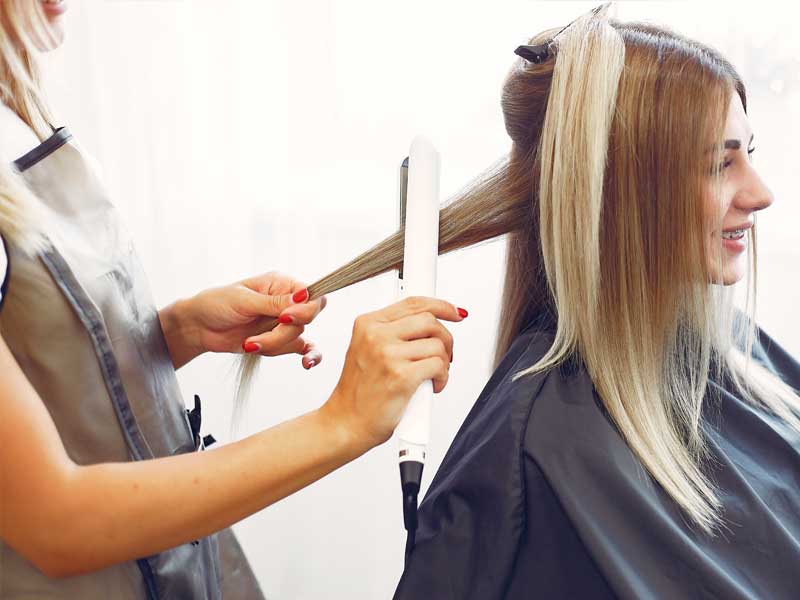Table of Content
THIS TOOL DOES NOT PROVIDE MEDICAL ADVICE. It is intended for informational purposes only. It is not a substitute for professional medical advice, diagnosis or treatment. Never ignore professional medical advice in seeking treatment because of something you have read on the site.

It’s effective at stopping hair loss as well as enhancing new hair growth. Just like protein, iron is also one of the most essential nutrients that can help promote hair regrowth. In the case of traction alopecia, you should increase the amount of iron you consume on a daily basis. For example, you can consume foods that are rich in iron like seafood, tofu, pumpkin, spinach, white beans, and lentils. American Journal of Clinical Dermatology, there is support for using minoxidil to treat traction alopecia. “Topical minoxidil can be helpful for promoting regrowth, but don't apply if the scalp is inflamed,” King says.
Licorice Root
You may particularly feel pain after releasing your hair from a tight bun or ponytail. A study suggests that almost 40% people use minoxidil to regrow hair. You might try this to treat traction alopecia of your scalp after consulting with your doctor. Never opt for tight hairstyles if you have any symptoms of traction alopecia. If you need to tie your hair, make sure you keep it as loose as possible.

Make fresh coconut milk at home by adding sugarless, grated coconut to a pan of boiling water. There’s a wide range of potential side effects, including acne, weight gain, high blood pressure, stomach ulcers, and muscle weakness. While corticosteroid injections are more effective, you may be able to use the medication as a topical ointment or take it orally as a pill.
Myth: Your average ponytail will cause hair loss.
In other types, the hair loss occurs in patches all over the scalp. In traction alopecia, usually just the hair that’s been pulled is affected. Traction alopecia is hair loss that’s caused by repeatedly pulling on your hair. You can develop this condition if you often wear your hair in a tight ponytail, bun, or braids, especially if you use chemicals or heat on your hair. Prevention and treatment begin with discontinuing the hairstyle causing hair loss.

We spend much of our lives on our feet, sitting upright, or with our head elevated on a pillow. This medicinal exercise contains several inverted positions that send blood flow to the scalp. Performing yoga is probably the only health and wellness trend that has withstood the test of time and is today one of the most popular forms of physical exercise.
Thinning Around the Hairline, Temples & Nape
Here are some of the common myths about traction alopecia, debunked. There are signs that can warn us that we may be suffering from traction alopecia, or that we may suffer it if we do not take action. Yes—if you catch traction alopecia before the follicles are permanently damaged, you may be able to completely reverse the condition.

Avoid wearing your hair in a tight style, especially overnight. Avoid pulling your hair up into a ponytail or bun, or loosen the style. Traction alopecia is particularly common in African Americans who wear their hair in hairstyles like braids and cornrows. However, evidence has shown that anyone can be at risk of developing traction alopecia if they wear tight hairstyles too often.
This treatment has shown positive results in those with moderate to severe hair loss. Much like its other forms, oral corticosteroids work by suppressing the immune system and inflammation in the body, which in turn encourages hair regrowth. Corticosteroid injections remain a popular, first-line treatment for alopecia areata.
But when applied in combination with topical corticosteroid medications, some people see improved results. The National Alopecia Areata Foundation reports that the condition affects as many as 6.8 million people in the United States and 147 million people worldwide. “It’s typically asymptomatic, meaning it’s not painful or itchy for most individuals. Some people think it may be triggered by a viral infection,” she says. Any balding or thinning can be devastating, especially if you’re female. It may seem like you’re the only one with the problem, but it is quite common.
Request your free consultation now, and ask us for a free, no obligation estimate. Yes—so long as the follicles are not permanently damaged, it is possible to regrow hair from traction alopecia. The sooner you start treatment, the better your chances will be. In some cases, the hair loss may be so severe that it results in patches of shiny, scarred skin.
A rich source of omega-3 fatty acids, flaxseeds are a great home remedy for getting rid of alopecia as well. Omega-3 fatty acids are essential for preventing hair loss and encouraging hair growth. Preventing hair loss and promoting hair growth is the essential cure for alopecia. Coconut oil contains the necessary proteins and medium chain fatty acids to help accomplish both of those goals, so it is an excellent home remedy to try out. However, the growing range of treatment options for people with alopecia areata is certainly a positive thing.
Also, studies on the extracts of licorice root have shown that the root can promote hair growth, especially in women. Rosemary is another great essential oil that can treat alopecia areata. One study compared the effectiveness of rosemary in treating alopecia to that of a commonly recommended medicine for the condition, minoxidil. Although both produced equivalent hair growth, rosemary did not cause as much scalp itching as minoxidil did.


No comments:
Post a Comment